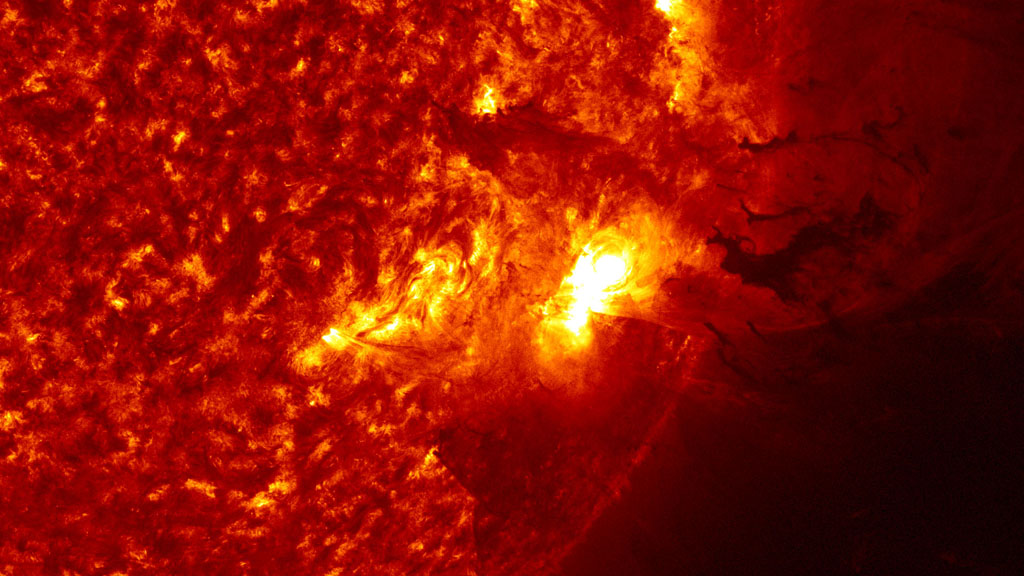Massive Solar Eruption Close-up
On June 7, 2011 the Sun unleashed an M-2 (medium-sized) solar flare with a spectacular coronal mass ejection (CME). The large cloud of particles mushroomed up and fell back down looking as if it covered an area almost half the solar surface.
SDO observed the flare's peak at 1:41 AM ET. SDO recorded these images in extreme ultraviolet light that show a very large eruption of cool gas. It is somewhat unique because at many places in the eruption there seems to be even cooler material — at temperatures less than 80,000 K.
This video uses the full-resolution 4096 x 4096 pixel images at a one minute time cadence to provide the highest quality, finest detail version possible.
It is interesting to compare the event in different wavelengths because they each see different temperatures of plasma. See the transcript for more notes on this.
Frames for each wavelength are available on these separate pages: 304, 171, 211, and1700.
Short video showing the eruption in various wavelengths and magnifications.
The prominence eruption in AIA's 304 ångstrom wavelength. This video is 4kx4k and will not play on all computers.

The prominence eruption in AIA's 211 ångstrom wavelength, colored in EIT green.

The prominence eruption in AIA's 171 ångstrom wavelength.

A still of the prominence eruption in 304.

A closeup still of the eruption at higher resolution.
Credits
Please give credit for this item to:
NASA/Goddard Space Flight Center
-
Animator
- Tom Bridgman (Global Science and Technology, Inc.)
-
Video editor
- Scott Wiessinger (USRA)
-
Producer
- Scott Wiessinger (USRA)
Missions
This page is related to the following missions:Series
This page can be found in the following series:Tapes
The media on this page originally appeared on the following tapes:-
June 7 SDO Prominence Eruption
(ID: 2011076)
Friday, July 1, 2011 at 4:00AM
Produced by - Robert Crippen (NASA)
Datasets used
-
AIA 304 (304 Filter) [SDO: AIA]
ID: 677This dataset can be found at: http://jsoc.stanford.edu/
See all pages that use this dataset -
AIA 211 (211 Filter) [SDO: AIA]
ID: 678This dataset can be found at: http://jsoc.stanford.edu/
See all pages that use this dataset -
AIA 171 (171 Filter) [SDO: AIA]
ID: 680This dataset can be found at: http://jsoc.stanford.edu/
See all pages that use this dataset -
AIA 1700 (1700 Filter) [SDO: AIA]
ID: 710This dataset can be found at: http://jsoc.stanford.edu/
See all pages that use this dataset
Note: While we identify the data sets used on this page, we do not store any further details, nor the data sets themselves on our site.
Release date
This page was originally published on Thursday, June 30, 2011.
This page was last updated on Wednesday, May 3, 2023 at 1:53 PM EDT.
